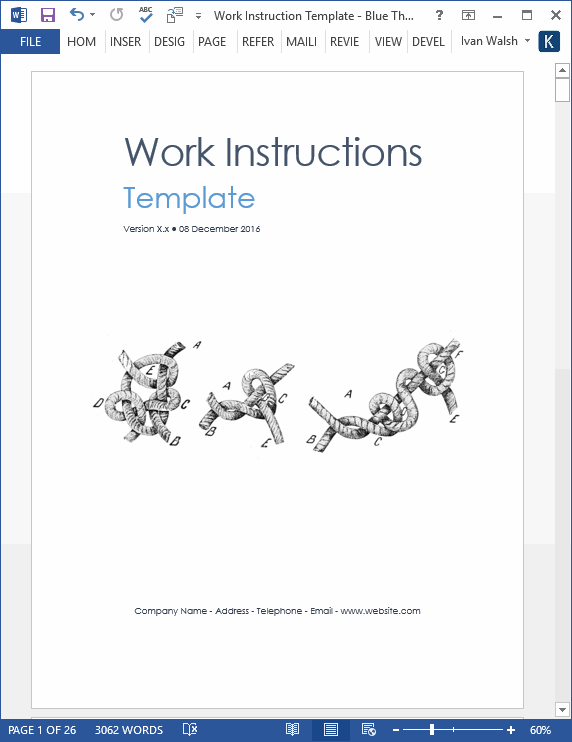Procedure Writing
Work Instructions – Document Naming Conventions (with examples)
What’s the correct naming convention to use when writing work instructions? What phrasing should you use when describing precautions, prohibited actions, and compulsory actions?
In this tutorial, we look at how to use a consistent naming convention to your work instructions, so they standalone for processes and procedures, and also how to phrase the typical activities performed by users.
Document Naming Conventions
List the following documents in sequential order:
- ..Pxxx = Procedure
- ..WIxxx = Work Instruction
- MLD = Master List of documents
Sample
- P = Process document
- WI = Work Instruction
- D = QMS form or document
- DS = company-specific form
- EX = external document or reference
Phrasing
Use the following words to describe handling precautions, prohibited actions, and compulsory actions.
- DANGER – Indicates an immediately hazardous situation which if not avoided will result in death or serious injury.
- WARNING – Indicates a potentially hazardous situation which if not avoided could result in death or serious injury.
- CAUTION – Indicates a potentially hazardous situation which, if not avoided, could result in minor or moderate injury, or damage to the equipment.
- NOTE – Explains the key point in the operation in a concise manner.
Document Format
Use of font, pt. size, margins, picture use conventions for image size, resolution, jpg. vs. bitmap, etc.
Page Design
Indenting, paragraph spacing
Outline format
Or – Outline format of I,A,1, a, vs. 1.0,1.1,1.2,1.2.1, etc.
Summary: A Work Instruction is a step by step guide to perform a single instruction. Follow these guidelines to write Work Instructions for IT, Pharma, Biotechnology, or Construction
Download Work Instruction Templates!
Learn more about this template


